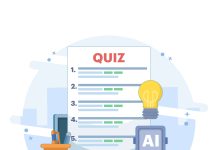After recently reminiscing with friends about do-it-yourself (DIY) home projects, we began comparing all of the Google and YouTube video searches that helped us achieve our goals. We realized that our learning happened by “Googling” and “YouTubing.” It was quick, simple, and allowed us to immediately apply our new skills.
What does this have to do with how we learned? Everything! Since the inception of Google and YouTube, there’s been a dramatic shift in how people seek out and apply knowledge. One thing is certain: This isn’t your “father’s learning”— meaning, learning increasingly is occurring through nontraditional contexts.
This is good news for Learning practitioners because it’s driving the need to discover innovative ways to allow people to learn. It’s bad news for the same reason. This is why Google and YouTube have been the two sources many now turn to with questions. And that leads to this question: Have we forgotten how to learn?
Learning is now, more than at any other time, essential to maintaining employment and career relevance. The question is more about whether those responsible for learning (you) can adapt and keep up. For most, their new learning reality is the simple act of Googling. For Learning practitioners, this is now the reality and your competition. So what do you do?
CHANGE YOUR APPROACH TO LEARNING
Learning is inherent to change and progress, but current learning approaches lag the exponential changes we’re experiencing. When people prefer to Google and YouTube over taking a course, you have an issue. Learning practitioners are challenged to reconcile accessibility, speed, and applicability.
How people actually learn new knowledge hasn’t significantly changed. How they expect to access and apply it, however, has. We’ve been conditioned by Google and YouTube to want knowledge faster, sooner, shorter, and from anywhere.
Traditional learning approaches are incapable of reconciling these elements. Learning practitioners must discover ways to incorporate methods offering these elements without undermining the learning participants require and expect.
EMBRACE TECHNOLOGY…PROPERLY
There’s nothing inherently bad about learning through Google and YouTube. But we must ask: What makes them so appealing? First, both democratized learning, allowing equal and instant access to knowledge. Learning is now at the tip of our collective fingers. Second, both reset learning expectations. People now expect to learn from anywhere at anytime. This is referred to as the “Google effect.”
This access to information at anytime and from anywhere has created lazy learners. It causes something known as digital amnesia. This is the tendency to forget information that can be found readily online by using Internet search engines such as Google. According to studies about the Google effect, people are less likely to remember details they believe will be accessible online.
The Google effect may be Google and YouTube’s Achilles heel and where learning practitioners can capitalize. Learning initiatives must incorporate what makes Google and YouTube appealing but recognize how to ensure learning retention through application to avoid the Google effect.
REMAIN RELEVANT
Here’s how to remain relevant with business leaders and learners:
- First, rethink your approach to learning. Don’t throw the baby out with bath water, but realize that much of the baby may have to go.
- Second, get rid of outdated learning concepts, the latest learning fads, and sketchy methodology. Do your learning due diligence.
- Finally, embrace technology appropriately. Don’t just jump on the latest technology trend. Learn what makes it effective and how you could apply it effectively to your learning efforts. Technology is simply a tool; it’s your learning expertise and methodology that counts.
Ajay M. Pangarkar, CTDP, CPA, CMA, and Teresa Kirkwood, CTDP, are founders of CentralKnowledge.com and LearningSourceonline.com. They are employee performance management experts and three-time authors—most recently publishing the leading performance book, “The Trainer’s Balanced Scorecard: A Complete Resource for Linking Learning to Organizational Strategy” (Wiley)—and assessment specialists for Training magazine. Pangarkar was named ELearning Magazine’s 2016 Thought- Leader. Help them start a “Workplace Revolution” at blog.centralknowledge.com or contact: ajayp@centralknowledge.com.


